
The Monk parakeet has also named the quaker parrot or quaker parakeet and the scientific name is Myiopsitta monachus An American parakeet that has its reputation as a garnish, of course, everything depends on individuals and the number of birds together. His name scientist is Myiopsitta Monachus.
- Height: 48 cm
- Weight: 100 grams
- Origin: It comes from Argentina, Bolivia, Brazil, Paraguay, and Uruguay according to each subspecies.
The parrot is green on its back, from the nape of the neck to the tail as well as the wings and thighs. The front, cheeks, chest, and belly are gray as well as the paws. The beak is horn color. It is a hardy bird that survives without much problem with the climate of the northern hemisphere. He even established himself in the wild in several cities of Europe where they multiply in number in large collective nests.
In an aviary, it is a peaceful bird when it is accustomed to its trainer. As soon as he sees something that has not been familiar to him, he will make him noticed by uttering high-pitched and repetitive screams as long as he does will not feel completely safe.
His behavior is very interesting and fascinating to observe in the colony, this one will not hesitate to build a Community nest and each pair will have an individual nest with its entrance. To be able to see it at work, it will be necessary to bring twigs willows or hazel trees, or other species.
It is often impossible to recover young people in order to be able to get them back banded when they build their own nest. This is why some people hang box nests on them that the couple will accept without too much trouble. The breeding season usually begins around the end of March. Laying is 4 to 8 eggs incubated by the female for 22 to 23 days, the youngsters will fly to their 6th week and will be weaned 2 to 3 weeks later.
Very often a second brood is carried out around August. Today there are several mutations in this case. In the recessive type, we have the mutations Blue, lutinos, and aqua. In the sex-related type, there are the mutations Cinnamon, Pallid, Opaline, and many more. In the type Dominant, there is the gray-green mutation for example.
This small parrot of 28 to 30 cm with a wingspan of 48 cm and a mass of 90 is a small stocky parrot mainly light green with pale gray to whitish forehead, face, chin, and throat.
Its chest is also whitish but barred with gray while the abdomen and lower abdomen are yellow. Its wings are duller green with blue-black feathers. Its tail is long colored above green and with light blue-green details. The thick beak is pale flesh to yellowish-brown and its eyes are dark brown. The legs and fingers are gray. Both sexes are similar but the male may be larger than his female, however, the juvenile is bright green with a greenish forehead.
There are four subspecies of the monk Parakeet:
- Myiopsitta monachus monachus is native to southeastern Brazil, Uruguay, and northeastern Argentina.
- Myiopsitta monachus calita living in western and southern Argentina.
- Myiopsitta monachus cotorra occurs in southwestern Bolivia, Paraguay, northern Argentina, and southern Brazil.
- The Myiopsitta monachus luchsi which lives in Bolivia in a small isolated population.
Description
The widow parakeet is a small green parrot belonging to the Psittacidae family. Like other members of its family, its beak is short and massive and its legs are strong. A buff stripe colors his belly, while his head, throat, neck, and chest are gray. It is about 30 cm long and has a wingspan of 53 cm. There is no marked difference between monk parakeet male and female the two sexes. The plumage of juveniles is a brighter green than that of adults. The monk parakeet is often observed in groups and can be recognized by the hoarse cries it continually utters.
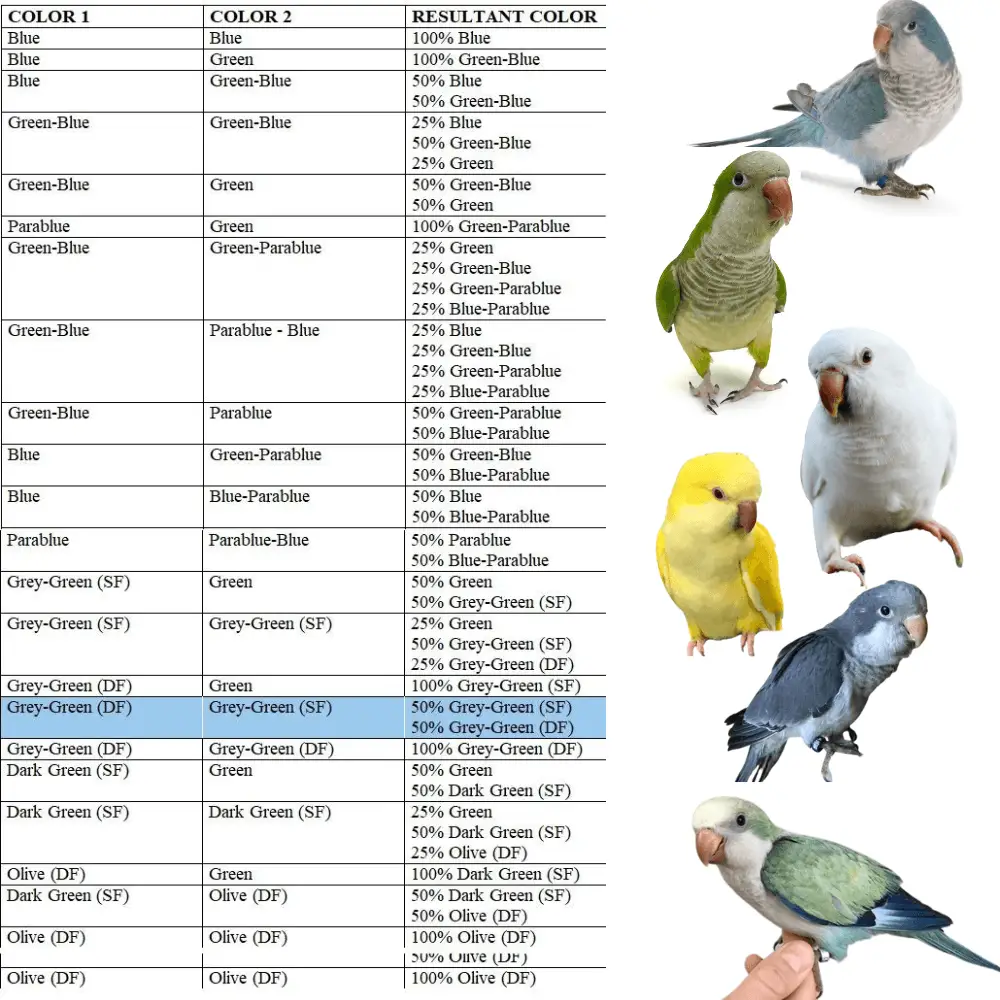
Similar species
The grey head and breast differentiate the quaker parakeet from other parrot species introduced into North America. The monk parakeet is exotic species with green plumage that may, however, have similarities to the monk parakeet. The monk parakeet is, however, half as small as the widow parakeet, while the monk parakeet is marked with a distinctive yellow spot on the wings that is particularly evident in flight. Both species are absent from Canada, but they are established in the United States.
Quaker parrot blue
Blue Quaker parrots are known for their blue bodies and pale blue feathers on their wings and tails. Quaker parrots are typically green in color, with a blue-gray breast and a distinctive dark mark on their forehead. However, some Quaker parrots may have blue feathers mixed in with their green plumage. This can occur as a result of genetics, diet, or other factors. Quaker parrots can also be found in a variety of other colors, including yellow, white, and even purple.
See More bout blue parrots:All different types of blue parrots
Quaker parrot green
They are known for their distinctive green and grey plumage, with shades of green ranging from olive to a bright, almost neon green. The green coloration is most prominent on the head, wings, and tail, while the chest and belly are typically a pale grey color. Quaker parrots also have a distinctive blue patch on their wings and a pale, beige, or white ring around their eyes. Some Quaker parrots may have a few splashes of yellow on their wings or tail feathers, but overall, their coloring is primarily green and grey.
See More bout green parrot: All different types of green parrots with pictures
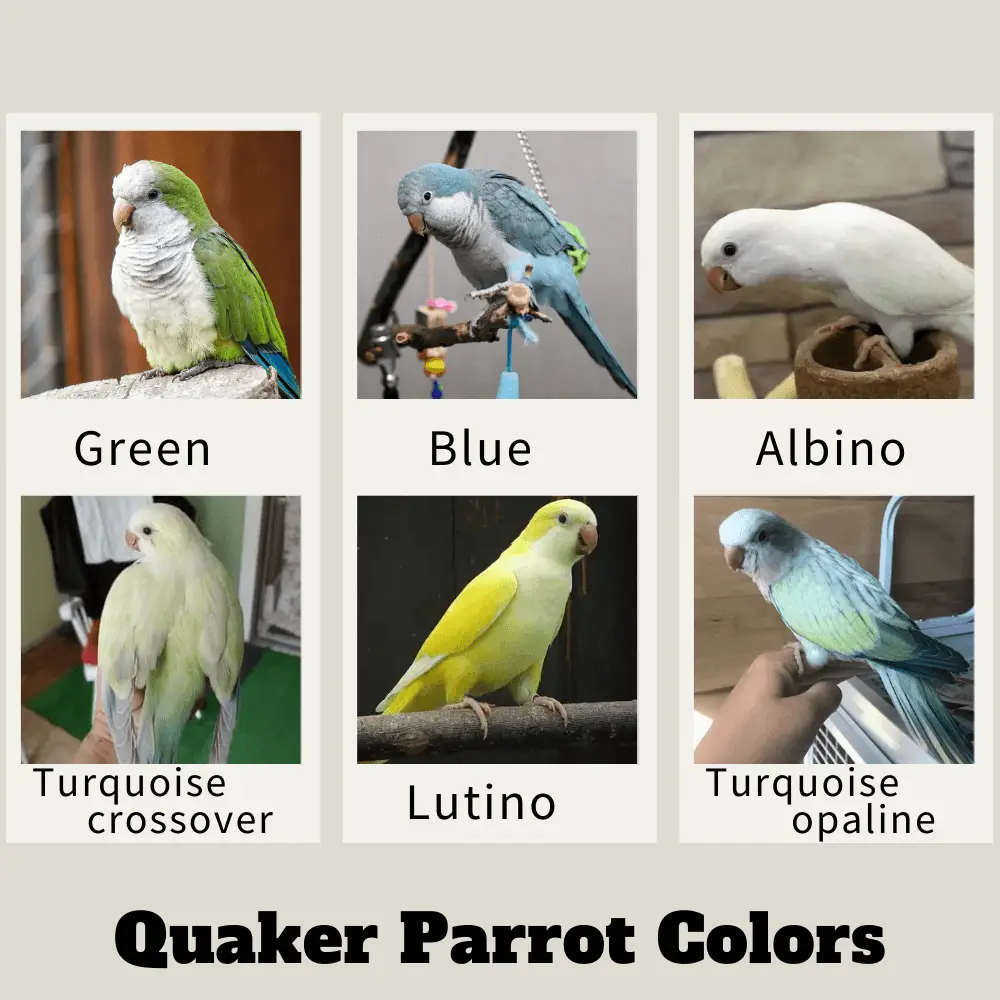
Monk Parakeet Behavior
The widowed parakeet is very vocal and has a fairly large vocabulary and emits different sounds such as high-pitched, hoarse screams, howls, and continuous chatter.
She is also able to imitate humans. It can also make hears of threats, launched during territorial defense but also cries of alarm launched during dangerous situations or under the effect of fear.
Calls are made by all birds in the group at the time of fledging, while contact calls are made only by adults during long flights, or when they are with young. The Widow Parakeet is very gregarious and gathers in flocks of 100 and over to feed.
While some feed, others act as sentinels around the group. She uses her thick beak to grab food and can even break an open pine cone to reach the seeds. The widow parakeet walks on the ground waddling and climbing with the help of its beak and claws. It sleeps in community nests all year round. In South America, males living in the same nest fight when the breeding season begins while birds from nearby nests fight year-round.
During threat parades, the widowed parakeet adopts a rigid attitude, the body stretched forward and emits cries of threat. The courtship display is very discreet, but we can observe a mutual smoothing of the feathers, the demand for food from the female to the male, and crosses of beaks. After the request for food, the two birds stretch out their beaks while shaking their heads vertically. Then pre-mating feeding takes place, and then the birds mate on a perch near the nest or inside the nest.
Monk parakeet may nest alone or in colonies which may include a single compound nest, or several nests forming a colony on a single tree or in nearby trees. This species has the surprising particularity of being the only one to build collective nests in nature, real labyrinths of twigs with multiple entrances.
Each pair will build its nest from that of the others, which ends up creating a “block of apartments” of very large nests.
In a compound nest, all members, including non-breeders, bring equipment and share maintenance work. The widowed parakeet has a fast flight and can change direction or altitude frequently. When it flies, the wings remain at body level.
It flies with fast beats and is quite close to the ground, rarely more than 10 m in height. Monk parakeet are incredible birds that bring together, in any small size, the equivalent of a gray for its ability to speak, a macaw for its energy, and an amazon for its temperament. They are intelligent, funny, playful, curious, and very dynamic and careful, however, these birds can become territorial, and their cage will become difficult to access.
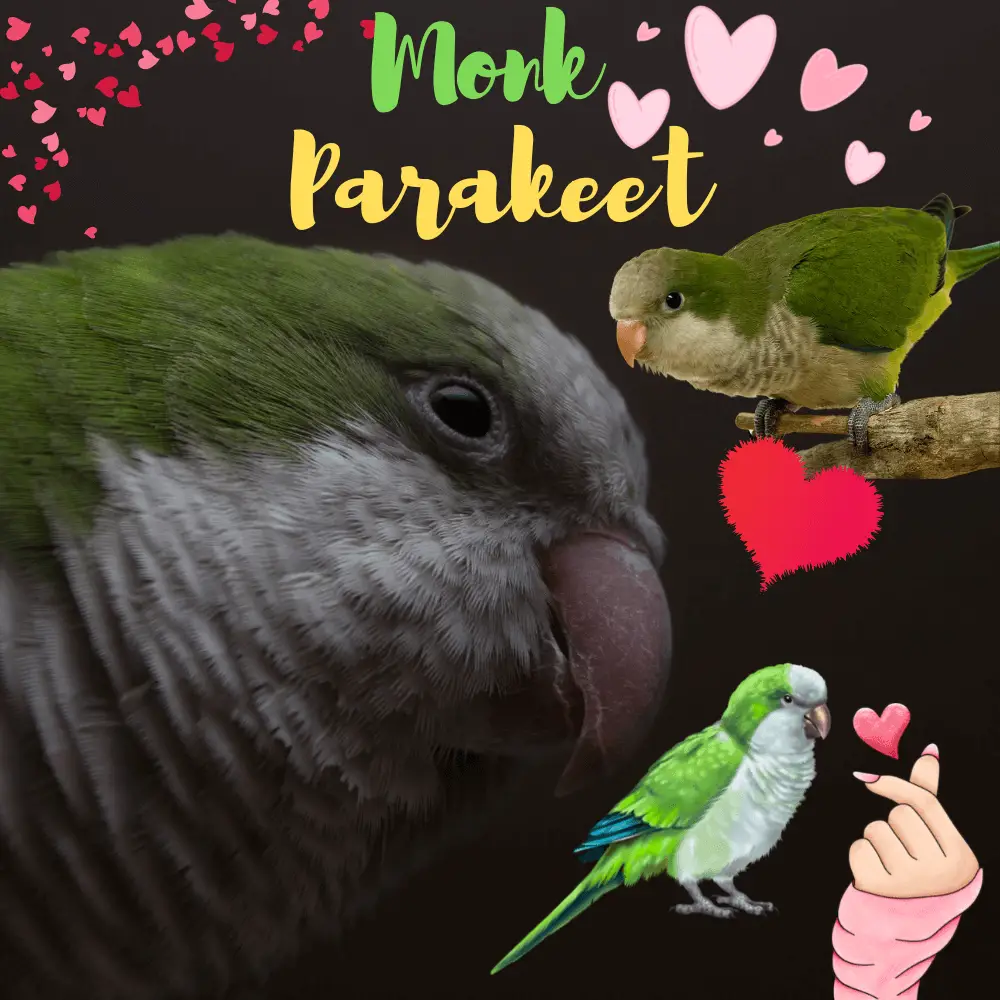
Quaker parrot Habitat
This Parakeet is native to Brazil, Paraguay, and Argentina but it is also found in colonies resulting from wild releases that are installed in certain regions of Europe (especially in Spain, Belgium, and southern France).
It was introduced to the United States as a domestic bird but escaped or released birds began their proliferation creating various colonies throughout the United States with a large population living in Florida. The Widow Parakeet is well adapted to urban and peri-urban areas where it is common in parks. It nests in all types of trees, from palm to poplar.
In North America, it is common in semi-arid savannas with isolated or sparse trees as well as in forests, from sea level up to 1800 m altitude. It is particularly common near dwellings.
In Quebec, favorable habitats for the Widow Parakeet are mainly open habitats in urbanized areas, including farms, gardens, golf courses, orchards, and cultivated fields. This small parrot feeds on thistle seeds, berries, large insects, corn, and fruits. It also frequents feeders that offer sunflowers. In winter, nests used for breeding serve as roosts and are reused year after year.
It is precisely the use of communal nests that allows this parrot to reduce the costs of thermoregulation and adapt to the colder climate. In Europe, however, the success of establishing the species seems limited when frost lasts more than 50 days a year. Quebec’s harsh winters, therefore, limit the establishment of the quaker parakeet for the time being, despite the availability of favorable habitats.
In addition to climate, population density is another factor that promotes the successful establishment of the species, suggesting good tolerance to and capacity for human-created habitats, including urban parks. In addition to the abundance of food, densely populated cities sometimes have heat islands that limit the effect of frost.

Captivity
This parakeet is very present in individuals, most often in EAM (Hand Raised).
She is very very active and will require a large cage filled with many toys that he will use, move, and tidy up all day chatting and whistling. It is very dependent on the affection of its owner and other Monk parakeet and will most often require a human or animal companion. A cage 1.50m long by 1m wide by 1.50m high will be enough for a bird out regularly.
On the other hand, a breeding couple will require an aviary sheltered from the wind, rain, and cold with a minimum dimension of 2m long for 3m wide and 2m high attached to a shelter 2m wide for 1m long and 2m high.
Monk Parakeets Need a Varied Diet
Mice parakeets accept a mixture of seeds, pellets, fruits, and vegetables.
In their natural environment, the widow parakeet is mainly granivorous, feeding on seeds, corn or sunflower grains depending on the season, leaf buds, flowers, fruits, hazelnuts and nuts, berries, and also insects.
Reproduction and growth
As soon as it has established its territory, the monk parakeet begins the construction of its nest, regardless of the season. In North America, where the species is introduced, breeding occurs in spring. The first laying is done at the age of two or three years. Nests are almost always located at least 10 m above the ground. Treetops, telephone poles, and other human-constructed structures, located in height, are potential sites to support the quaker parakeet’s nest.
The nest, consisting of branches and twigs, is large, and wide, and takes the form of a sphere or dome. Usually, it has several rooms with private entrances facing down, accommodating several couples. In its original habitat in South America, the monk parakeet can build a nest containing up to 20 compartments, each serving a monogamous pair.
Its diameter can reach 1 m and is used to raise 5 to 8 young that are fed in the nest for about forty days. Almost half of the young will not survive to fledge. This parrot is the only representative of its family that builds a nest instead of nesting in a cavity.
Nest
The Monk parakeet is the only member of its family to nest in the tall branches of trees or on any tall structure, natural or artificial. Its nest is made of dry twigs, often thorny for protection.
It can nest alone or in colonies creating a complex of nests. All members of the colony participate in the construction and maintenance of the nest. The construction starts with the ground, then the sides, and finally the roof. The entrance, often located under the structure, is a short tunnel that leads to a wider spot where birds can turn. Subsequently, it arrives in the brooding chamber which has the shape of a globe. Such agglomerated nests can weigh up to 1200 kg.
They maintain the nest throughout the year and will be used outside the breeding season for sleeping. The female will lay 5 to 8 smooth white eggs that she will incubate for about 24 days.
During this time, the male will bring food to his female. Chicks are nidicolous and covered with yellowish down. They are fed by both parents with regurgitated food and can leave the nest after 40-50 days after birth. This species can have two broods per year in their natural habitat and often up to three in captivity.
History of introduction and main vectors of spread
The species is native to South America. In Quebec, it is used as a pet bird. Individuals found in the wild were released there voluntarily or escaped from captivity. Indeed, some owners can sometimes get tired of this bird with its loud cry and decide to give it back its freedom. From 1968 to 1972, the United States imported more than 64,000 birds, some of which were released or escaped from pet stores, zoos, or places of residence.
The species was first observed nesting in North America in 1967 in New York, Chicago in 1968, and Miami in 1969. The species then spread rapidly and an active control program was put in place in 1972 to limit its spread. The control program was discontinued in 1975 and the population grew again rapidly. From 1976 to 2004, the population doubled every six years, and control efforts were deemed too demanding to limit the population. Indeed, 50% of adults would have to be eliminated or 20% of nests destroyed each year to reduce population size.
In Quebec, the first mention of a quaker parrot living in freedom dates back to May 1980, in the Montreal area. This was the northernmost record for this species. Following the release of six individuals in Dollard-des-Ormeaux in 1984, the species was observed in the Montreal area, but it would never have managed to nest. It was in May 1987, in Laval, that the first record of nesting of the monk parrot was reported in Canada. One individual was observed in Aylmer in November 1990 and another in Tadoussac in June 1991.
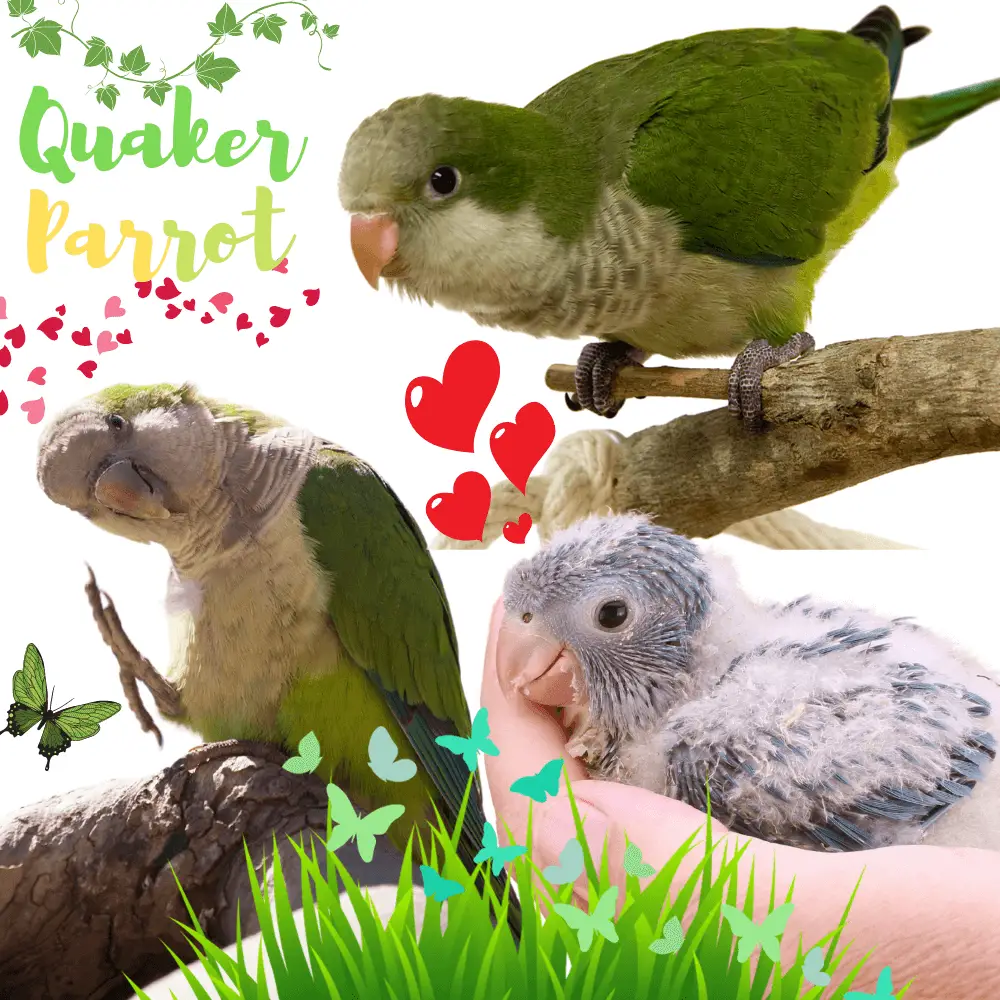
Known distribution
Populations of quaker parrots are naturally distributed from Bolivia to Argentina in the southern part of South America. It has been introduced in several countries, including the United States, England, Holland, Italy, Spain, Portugal, Greece, and Israel. The northern limit of its distribution is influenced by winter temperature and climate change should allow the monk parrot to extend its distribution northward.
Impacts of its introduction
In its natural range, the species is known to cause crop damage. In Argentina, it causes agricultural losses estimated at $1 billion each year. However, in the regions where it has been introduced, this problem has not yet arisen and its presence has not caused negative impacts on local wildlife communities. On the other hand, the rapid increase in several introduced populations suggests that competition with the quaker parakeet could become harmful to wildlife.
The concerns associated with its introduction relate rather to the construction of its nest. monk parrots can build large nests on communication towers and structures used for electric transport. Nests located on these structures can cause power outages and fires, which can result in considerable expense.
The widow parakeet also has a high potential to spread the avian plague, which is a poultry disease, often epidemic and caused by a paramyxovirus. In humans, it can cause acute conjunctivitis.
To date, no impact has been observed in Quebec.
Prevention and Control
In North America, there is no national policy related to the control of this species. There are, however, laws and agreements, such as the Wild Bird Conservation Act (1992), that restrict the importation of wild exotic birds such as the quaker parakeet. It is also part of the CITES (Convention on International Trade in Endangered Species of Wild Fauna and Flora) parrot species. In Canada, this convention stipulates that specimens to be imported into Canada must be accompanied by a CITES export permit from the exporting country.
In Argentina, where the species is native, various methods used to try to limit populations have proven ineffective (culling, trapping, net capture, nest destruction, and poisoning).
Prevention would therefore be the best way to prevent its spread. To date, the threat posed by the species in Quebec would be low. The populations frequenting Quebec are small and have low reproductive success due to harsh winters. However, climate change will create more favorable conditions for their survival, especially in some urban settings, and it remains important not to release monks parrot into the wild.
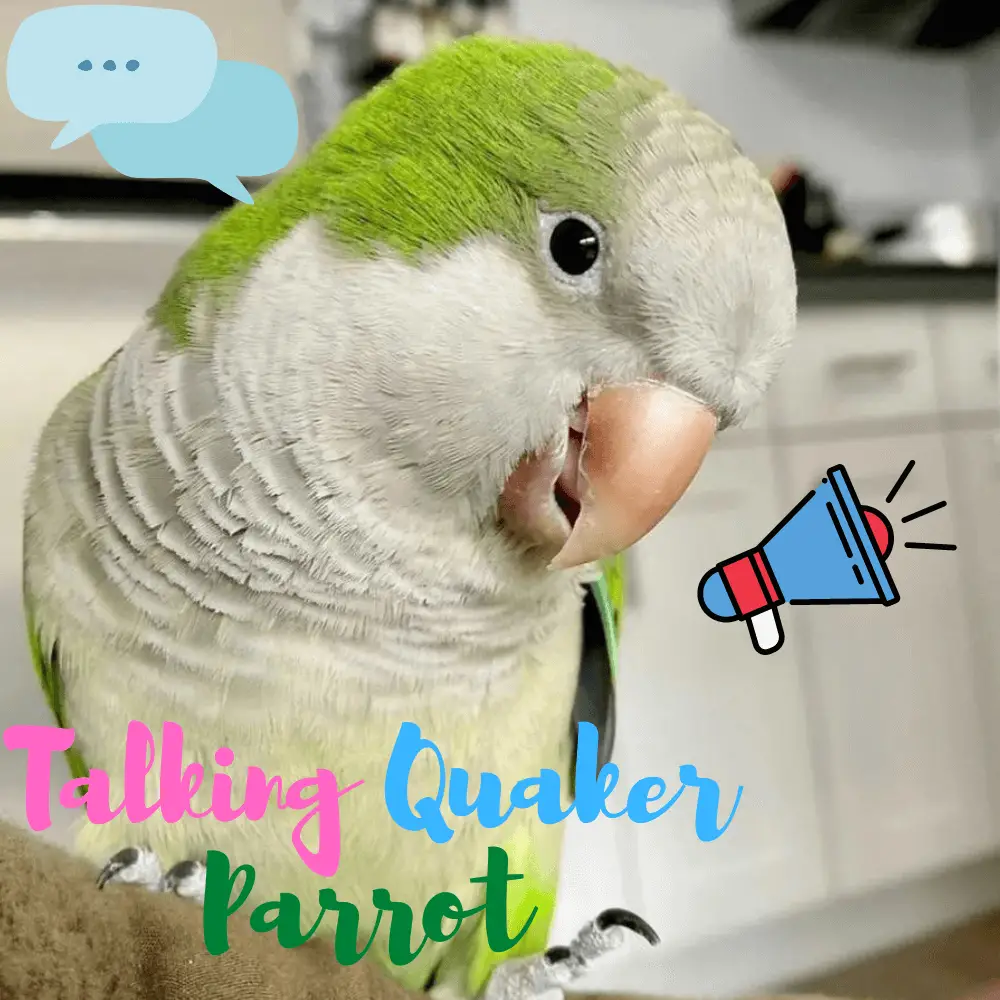
Quaker Parrot is an Excellent Talkers
Can monk parakeets talk? how and why do parrots talk also which parrot can speak? and why do parrots’ eyes dilate when they speak? and what is the cheapest parrot that speaks?
Make your monk parakeet parrot talk
Quaker parrots are known for their excellent talking skills. Their communication skills represent their cognitive abilities, as they can develop a large vocabulary over time. Not only that, but they’re smart enough to use the words they’ve learned in the right context. Many homeowners are surprised when their Quakers say the right thing at the right time. Let’s dive into the intelligent world of Quaker parrots:
Without a doubt, the most distinguishing feature of the Quaker parrot is its ability to speak. These are very talking birds! Quaker parrots are known for their extraordinary ability to mimic human voices, and they can learn as many as 50 or 60 words or phrases. Remember, not every Quaker can speak. This varies from bird to bird. Like humans, some of our winged friends are just louder than others.
Playful, cheeky, and curious, they make excellent speakers. Quaker parrots have a distinct screeching/clicking sound, and these birds are often heard with harsh chatter. Socialization and interaction are an important part of the daily life of a Quaker parrot. This aggressive training method should be used to help overcome the overbearing behavior that some Quaker parrots may display. They should not be confined to a cage as this can cause behavioral problems. Physically, the Quaker parrot is a hardy bird that tolerates frigid temperatures well
Do quaker parrot talk
Yes, Quaker parrots are known for their ability to mimic human speech and can learn to say a variety of words and phrases. However, their ability to talk varies from individual to individual and depends on several factors, including the amount of time and effort they are given to practice, their age, and their overall health and well-being. Quaker parrots are intelligent and can learn to mimic sounds and words through repetition and reinforcement. They may also be more inclined to talk if they are kept in a stimulating environment and given plenty of opportunities for mental and physical activity. It is important to remember that each Quaker parrot is unique and may have its own personality and characteristics, so it is not guaranteed that every individual will be able to talk.
Quaker parrot sounds
Quaker parrots are known for their vocal abilities and can make a variety of sounds. They are known to mimic words and phrases, and they can also make a variety of chirping and tweeting sounds. Some common sounds that Quaker parrots make include:
- Chirping: This is a common sound that Quaker parrots make, and it is a high-pitched, quick series of notes.
- Tweeting: Quaker parrots can also make a variety of tweeting sounds, which are short, high-pitched calls that are often used to communicate with other members of their flock.
- Whistling: Quaker parrots are known for their ability to whistle, and they can often be taught to mimic specific tunes.
- Mimicry: Quaker parrots are also known for their ability to mimic words and phrases, and they may repeat words or phrases that they hear frequently.
Overall, Quaker parrots are very vocal birds and can make a variety of sounds, including chirping, tweeting, whistling, and mimicry.
Can Monk parakeet Live for a Very Long Time?
The monk parrot, also known as the temple parrot, is a species of parrot found in India and Southeast Asia. The name monk comes from the fact that the bird’s spotted feathers mimic a monk’s habit. In addition to its unique appearance, the monk parrot is noted for its intellectual abilities. The monks have a reputation for being able to outwit humans. In addition, they can learn verbal commands by repeating them back to their owners. Essentially, the bird thinks and acts like a human.
Monk parrots are social and learn their communication skills from interacting with others. They are also highly intelligent and learn quickly. As with other birds with high levels of brain activity, they can learn speech and vocabulary. They also learn to understand human language through repeated exposure. According to National Geographic, in addition to verbal interactions with their owners, monks also learn words and phrases through listening to human conversations. Apparently, they pick up new words by repeating what they hear. Other high- intelligence birds perform the same feat; they mimic what they hear to understand what they’re told.
The monk parrot’s lifespan is approximately 8 to 10 years in the wild and 15 to 20 years in captivity. In the wild, the monk parrot’s lifespan averages 12 years. Wild monk parrots experience the same lifespan as their free-living brethren except for one thing: an overabundance of food causes some of them to pass away from natural causes at an earlier age. In addition, disease and predators kill some wild monk parrots before their usual age of death. On the other hand, well-cared-for monk parakeets live as long as 20 years in captivity- even if they only see limited amounts of affection from their owners every day.
A monk parakeet that lives in captivity can live in a home environment if it receives sufficient attention and nutrition. Typically, owners that pair their birds with affection do not give them enough attention or proper nutrition to thrive in captivity. In such cases, the birds’ lifespan is shortened due to poor living conditions and lack of nutrition. In contrast, a bird that receives adequate care thrives well in captivity and can live in a home environment instead of on a commercial aviary floor.
The monk parrot has proven its intellect when it comes to learning verbal commands from its owners and repeating them back to them. They also thrive well in captivity if given proper care- as long as their owners give them attention and quality food every day. The monks are affectionate birds that love human interaction and will gladly accept a home for themselves if given the right conditions.
Quaker parrot price
The price of a Quaker parrot can vary widely depending on the location, age, and quality of the individual bird. On average, you can expect to pay anywhere from $200 to $800 for a Quaker parrot. However, prices can be higher or lower depending on the specific circumstances. It’s important to remember that purchasing a pet is a serious responsibility, and it’s important to consider the long-term costs of care, including food, toys, and medical expenses, before making a decision. It’s also a good idea to research the specific needs of Quaker parrots and make sure you are able to provide the proper care and environment for the bird before bringing one into your home.
Quaker parrot cages
Quaker parrots, also known as Monk parakeets, are intelligent and social birds that need plenty of space to move around and exercise. When selecting a cage for a Quaker parrot, it’s important to choose one that is large enough to accommodate your bird’s needs and allow them to stretch its wings. Here are a few things to consider when choosing a cage for a Quaker parrot:
- Size: Quaker parrots need a spacious cage to move around and exercise. A cage that is at least 24 inches wide, 24 inches deep, and 24 inches tall is a good minimum size for one Quaker parrot.
- Bar spacing: The bars of the cage should be spaced no more than 1/2 inch apart to prevent your bird from getting stuck or escaping.
- Material: The cage should be made of durable material, such as stainless steel or powder-coated metal, to ensure it can withstand your bird’s beak and claws.
- Perches: Make sure the cage includes multiple perches at different heights to allow your bird to climb and exercise.
- Access: The cage should have ample access points, such as doors or openings, to allow you to easily reach in and interact with your bird.
- Safety: Check that the cage has a secure latch and no sharp edges or other hazards that could harm your bird.
By considering these factors, you can choose a cage that is safe and comfortable for your Quaker parrot.
Quaker parrot breeding
If you are considering breeding Quaker parrots, it is important to understand the responsibilities that come with it.
First, it is essential to do your research and make sure that you are well-prepared to care for the chicks. This includes setting up a suitable environment for the breeding pair and their chicks, providing a nutritious diet, and being prepared for any medical emergencies that may arise.
It is also important to consider the local laws and regulations regarding the breeding and sale of Quaker parrots. Some areas have restrictions on the ownership and breeding of these birds, so it is important to familiarize yourself with the laws in your area before proceeding.
In addition, it is essential to consider the welfare of the birds. Quaker parrots are social animals and should not be kept in isolation. It is important to provide them with a stimulating environment and to ensure that they receive regular social interaction and mental and physical stimulation.
Overall, breeding Quaker parrots can be a rewarding experience, but it is important to be prepared and to prioritize the well-being of the birds. If you are considering breeding Quaker parrots, it is a good idea to speak with a veterinarian or an avian specialist for guidance.
List of Monk parakeet Care Supplies and Costs
| Habitat | $120 |
| Food | $20 |
| Treats | $15 a month |
| Habitat Substrate | $10 a month |
| Food/Water Dishes | $10 |
| Perches | $5 |
| Toys | $10 |
| Mineral Block Chews | $5 |
| Spray Bottle | $10 |
| Nail Clippers | $10 |
| Vitamins / Supplements | $5 |
| Vet Visits (Routine/ Surprise) | $60 per visit and the tests and surgeries, etc |
Status in the Natural State
The widow parakeet is very attractive as an ornamental bird but is also very persecuted as an agricultural pest, despite its generally slight damage, with minor economic impact.
It is classified as Least Concern.
Monk Parakeet Training
SOURCE: BirdTricks




















